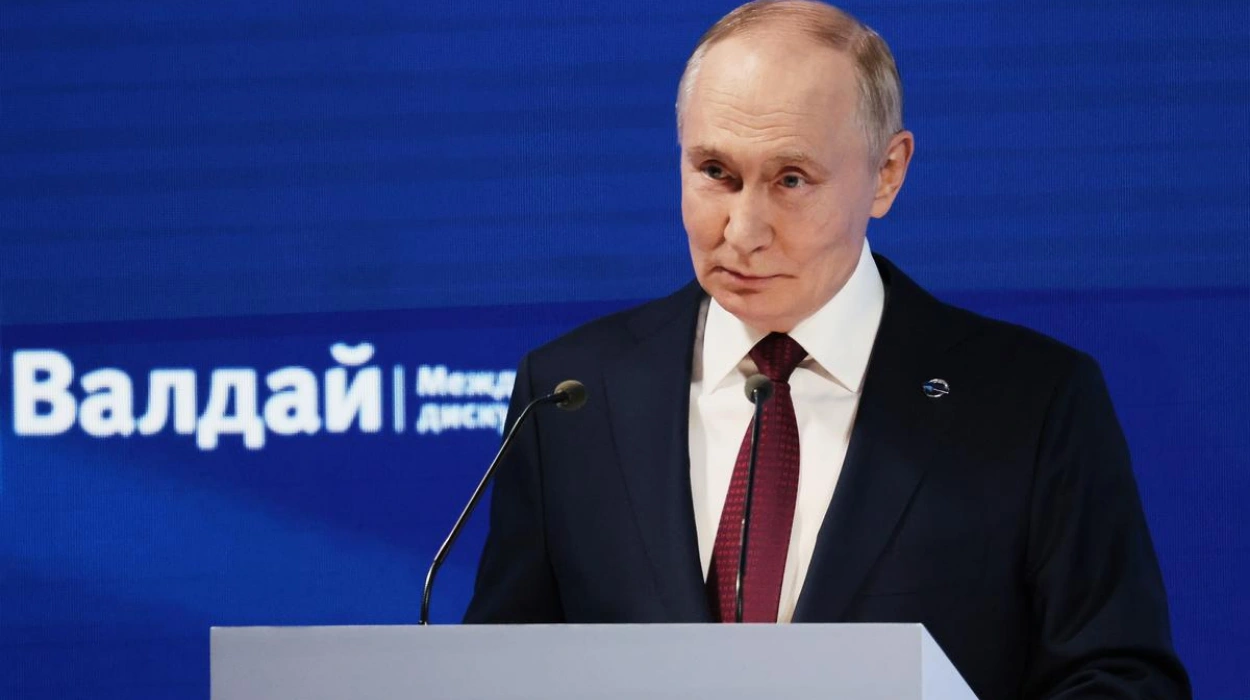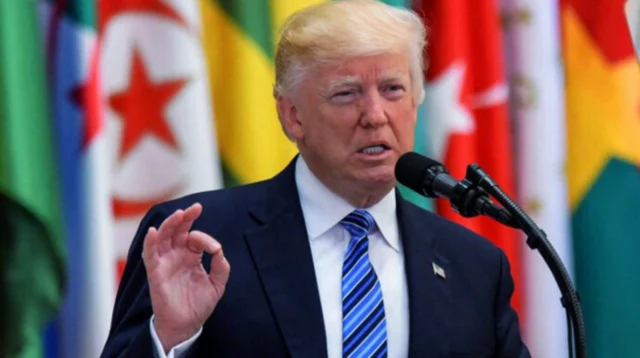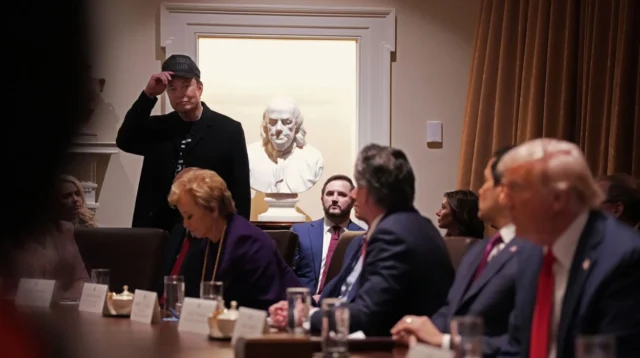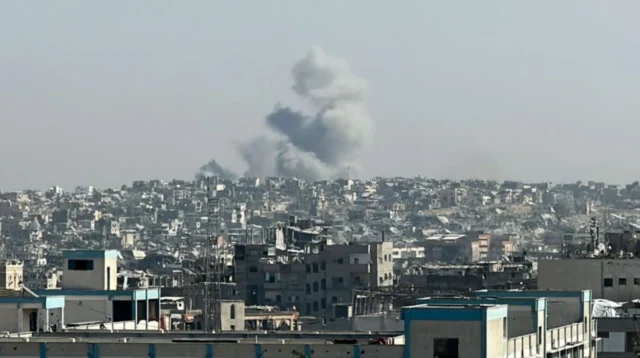Early October 2025 Russian President Vladimir Putin issues a direct threat to Washington after the U.S. has been reported to be contemplating providing Ukraine with Tomahawk cruise missiles. In the speech before the Valdai Discussion Club in Sochi, Putin stated that such a transfer would become the qualitatively new tier of escalation in the ongoing war and the U.S.-Russia relations. Even though he insisted that the Russian air defense mechanism can intercept the missiles, he also pointed out that their presence would have far-reaching ramifications.
The Tomahawk, a long-range precision-guided missile that has a range of more than 1,500 miles, has not been included in U.S. military assistance to Ukraine before. This would greatly increase the ability of Ukraine to strike deep inside Russia targets such as oil wells, supply bases, and military bases in deep Russian territory beyond the battlefield. To Moscow, such an extension of operation in Ukraine alters the strategic calculus, and poses threats to assets that were not previously viewed as endangered.
The statements by Putin did not reflect the immediate military effect of the missiles but emphasized on the overall message. He made the decision appear as one that would shift the dynamics of deterrence and compel Russia to rethink its posture not just in Ukraine but in Europe. What it suggests is that the supply of the missiles might result in asymmetric reaction, be it an increased hybrid warfare, economic retaliation, or military response in other geopolitical arenas.
Putin’s nuanced relationship with Trump amid missile tensions
Putin was keen to separate his opinion of the current U.S. administration to that of his stand of the former President Donald Trump even though he issued a stern warning. Trump and Putin announced plans to have an open and respectful dialogue in a private meeting in Anchorage in August 2025, which the Kremlin characterized as such. Putin hailed Trump as practical, indicating his expectation of a possible de-escalation in the future with direct leader-to-leader negotiations.
This one-sided rhetoric refers to the continued attempt by Putin to maintain the diplomatic back channels despite increasing the rhetoric regarding developments in the military. By offering Trump political courtesy and at the same time declaring the current U.S. policies wrong, Putin is not only courting a future ally, but also capitalizing on the internal political strife within the United States to his benefit. The open flattery is the opposite of the increased tension of official bilateral correspondence between the Kremlin and the Biden administration, which publicly endorsed the transfer of advanced weaponry.
Trump’s rhetoric and policy shifts
The comments made by Trump himself have ranged between aggressive posture and allusions of other forms of diplomacy. He mentioned Russia, in September 2025, as a paper tiger, in his defense of his previous attitude toward Moscow. Putin rejected the word, turning the fire on NATO which he described as unstable and divided. Nevertheless, regardless of the exchange, both leaders still retain the option of engagement, although new Trump-camp defense policies offer more assistance to Kyiv.
Vice President JD Vance, who has been described as a key person in the evolution of Trump on the foreign policy front, affirmed that there were still internal deliberations on strategic supply of weapons such as Tomahawk missiles. The deployment, according to Pentagon logistics, is allegedly delayed because of the lack of inventory and manufacturing schedule, but the political desire to make Ukraine have a more advanced deterrence system is still high.
Regional and global repercussions of missile escalation
Outside the military context, Putin has extended his threat to the possible effect it has on the energy supply of Europe. Putin threatened to take retaliatory economic actions citing the additional interference with Russian energy exports such as seizing or blocking Russian oil tankers by Western navies. He claimed that unfriendly behavior in one sphere will lead to systemic shocks in other ones with references to the possible mess in oil and gas flows which could be a threat to the weak post-winter recovery of Europe.
There is a difficult dilemma which the European policymakers have to deal with. Additional military assistance to Ukraine such as sophisticated weapons invites vindictive measures to energy imports. Simultaneously, retracting the aid vows would undermine the European strategic credibility and will splinter internal political cohesiveness in particular states of Central and Eastern Europe, where there is still a strong sense of Russian aggression.
Psychological and propaganda dimensions
Potential transfers of Tomahawk missiles have become one of the central topics in Russian state media and have been used to create domestic discourse of Western aggression. According to the warnings by senior Russian military officials, such as the retired Admiral Sergei Avakyants, the move is an indication of a severe escalation, aimed at disrupting the internal security of Russia. These utterances have permeated and reinforced the belief that there is an existential threat by the West.
Putin has, however, also tried to damp nuclear anxiety, saying that strategic balance was not lost, Russia had no intention to rise to the nuclear confrontation. This two-pronged message is used to accomplish two tasks; to energize the backing of the domestic audience, and to keep a reinforced deterrence message to foreign audiences who need to be cautious of uncontrolled escalation. The Kremlin policy of technological parity and survivability especially in its hypersonic missile arsenal and new S-500 defense systems also contributes to the dissolution of the perception of Western superiority.
Broader strategic outlook in Russia-US confrontation
With Russia in its second year of active war in Ukraine, the deployment of Tomahawk missiles, should it be verified, would reflect a more fundamental change in the Western goal of going beyond defensive aid to deterrence posture that is more aggressive. The size and range of the Tomahawk system represents a desire to challenge the depth of strategy, erasing red lines previously implicitly observed since the start of the conflict in 2022.
In retaliation, Moscow might pursue an increased presence in other disputed areas, including the South Caucasus, Sahel or the Arctic, where the West is not as active. Even there, Russian military advisors have already been observed to have intensified their presence in Niger and Chad extending tactical assistance to regimes that are severing ties with the Western community. Such actions suggest a multilateral approach to world disruption that is meant to challenge U.S and European influence in places outside Ukraine.
Simultaneously, the cautious attitude of China to the scandal of the missiles highlights the fragile trilateral relationship at work. Beijing is officially neutral, but has reinforced the message of restraint and dialogue, indicating that the long-range offensive systems are entering the conflict areas in precedence. This warning is probably on the basis of Chinese estimations in times of future crisis and in this case with Taiwan.
Putin’s warning on U.S. Tomahawk missiles reveal a confrontation unfolding on multiple levels military, economic, psychological, and diplomatic. The prospect of strategic weapons transfers extends beyond battlefield considerations, challenging existing norms of conflict containment and deterrence. As both Moscow and Washington weigh their next moves, the stakes rise not only for Ukraine but for the entire structure of global order that has so far kept superpower rivalry below the threshold of direct war. The evolution of this dynamic will shape the nature of confrontation and cooperation in the years to come, as old doctrines are tested by new technologies and emerging alliances.





